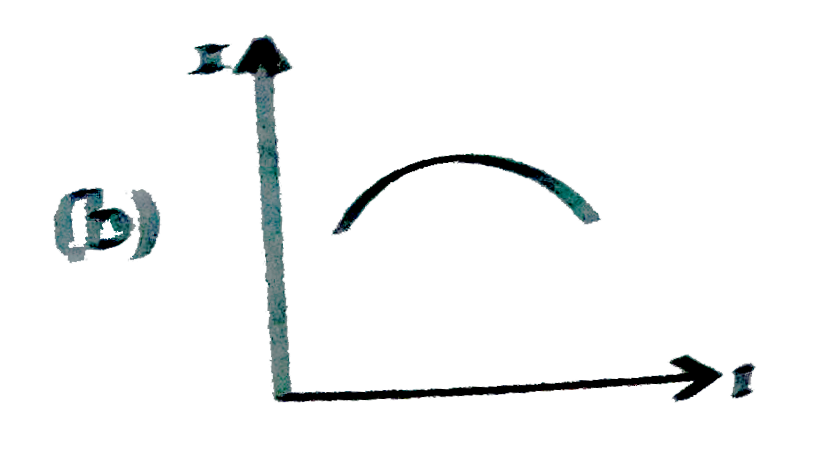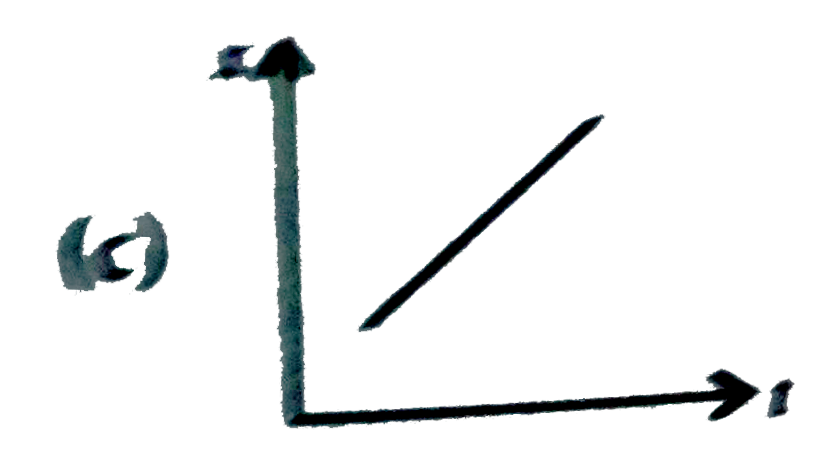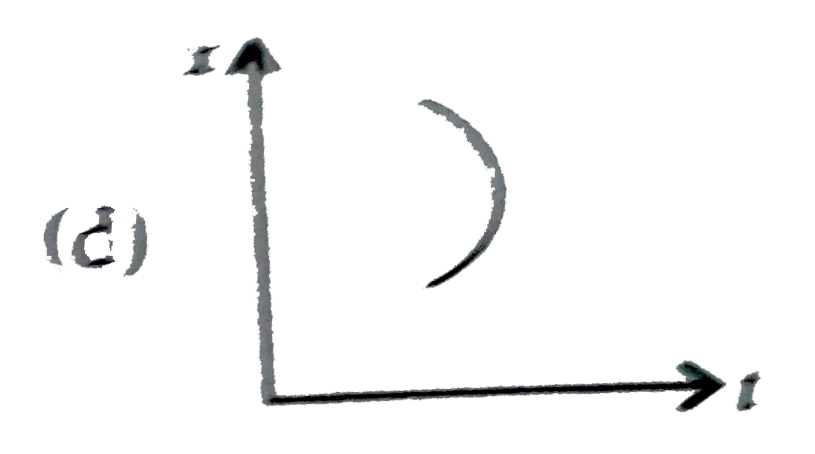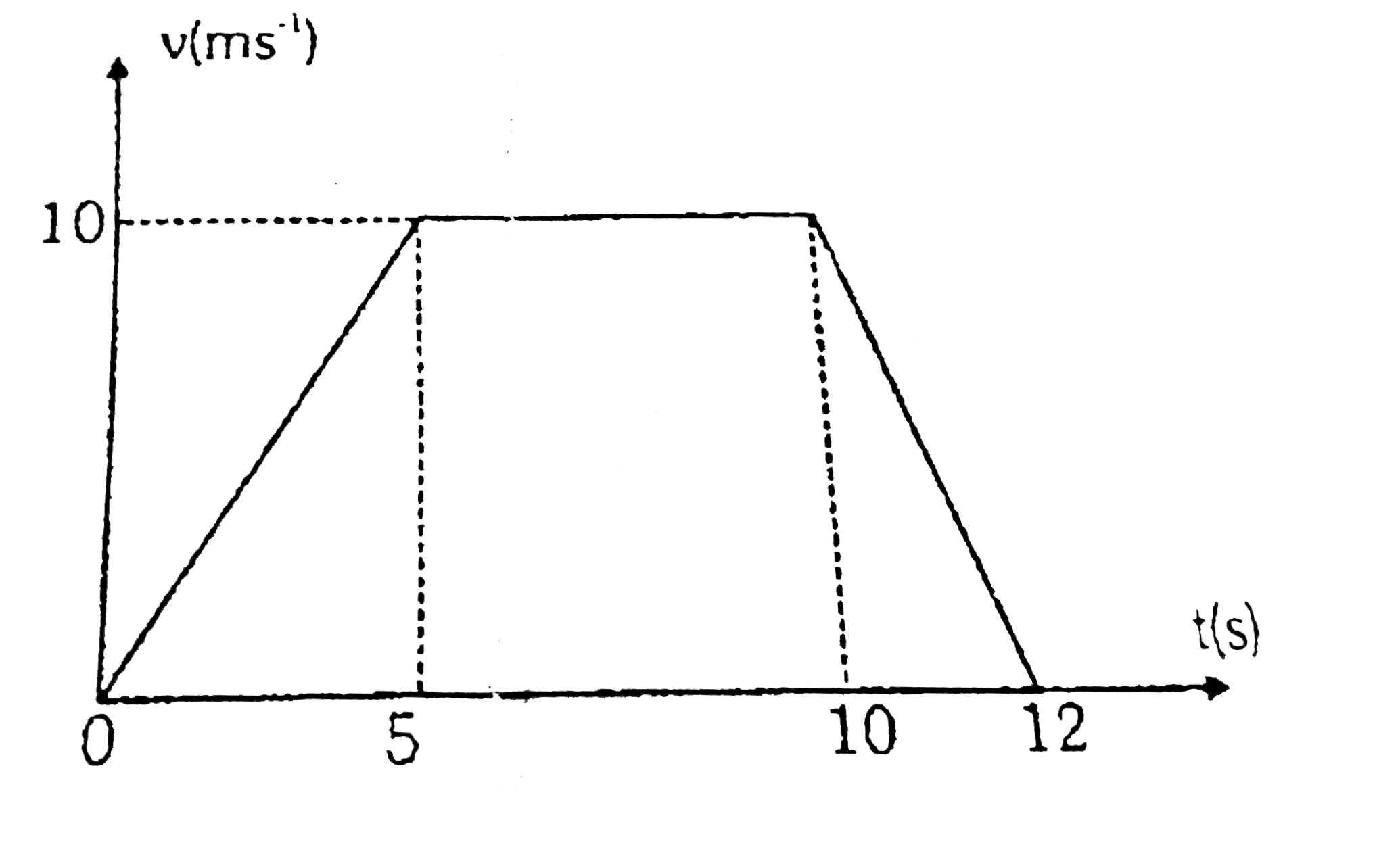Draw (i) position-time (ii) velocity-time and (iii) acceleration-time graph for the motion of an object under free fall.
Text Solution
We assume the downward direction as the positive direction during this free fall.

(i) As u =0 , the displacement at any time t is h = 12gt2 or t2=2gh.
So the position-time graph is a parabola passing through the origin [ like x2=4ay on a x-y graph].
(ii) Initial velocity u = 0 so at any time t the velocity is v =gt.
Hence the velocity-time graph is a straight line of positive slope passing through the origin [ like y = mx on a xy -graph]
(iii) Acceleration (a) = acceleration due to gravity (g) = constant and positive.
So the acceleration-time graph is parallel with time axis.
|
Topper's Solved these Questions
- ONE - DIMENSIONAL MOTION Book:CHHAYA PUBLICATIONChapter:ONE - DIMENSIONAL MOTION Exercise:EXAMINATION ARCHIVE with solutions ( NEET)
Explore 1 Video
- NEWTONIAN GRAVITATION AND PLANETARY MOTIONBook:CHHAYA PUBLICATIONChapter:NEWTONIAN GRAVITATION AND PLANETARY MOTIONExercise:CBSE SCANNER
Explore 19 Videos
- QUESTION PAPERS OF NEET -2017Book:CHHAYA PUBLICATIONChapter:QUESTION PAPERS OF NEET -2017Exercise:QUESTION
Explore 32 Videos
Similar Questions
Knowledge Check
The slope of velocity-time graph for uniform motion of an object is
AUnityBZeroCInfiniteDMore than unity but has some finite valuePosition-time graph for motion with zero acceleration is
A B
B C
C D
D
Position-time graph for motion with zero acceleration is
A B
B C
C D
D
Draw the position-time graph of a stationary object.
View SolutionDraw the position-time graph of a stationary object.
View SolutionDraw displacement time and acceleration -time graph for the given velocity-time graph

View SolutionDraw displacement time and acceleration -time graph for the given velocity-time graph

View SolutionDraw displacement-time, velocity-time and acceleration-time graphs for a particle executing simple harmonic motion. Discuss their phase relationship.
View Solution
